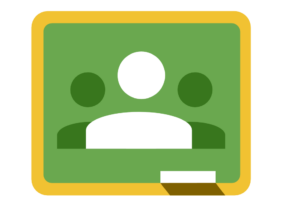As part of our #ETTchat series, we will be chatting with our EdTechTeacher instructors about some of their favorite tools, apps, and strategies for the classroom. In this post, he chats with Ben Sondgeroth about why teachers should be using Google Classroom.
At the beginning of the 2014 school year, Google released Google Classroom--an innovative online platform that allows teachers to manage the creation, distribution, and grading of assignments from one centralized, web-based location. Since its launch, Google Classroom has seen widespread adoption in schools across the country, with thousands of teachers and students signing on to use it every day. Even with this explosive growth, however, only a fraction of teachers who could be using classroom are taking advantage of this valuable tool.
I recently had the opportunity to discuss the many benefits of Google Classroom with Ben Sondgeroth. Ben is a Google for Education Certified Trainer, and one of EdTechTeacher’s newest instructors. Ben is also a fierce advocate for Google Classroom and explained some of his thoughts on why it’s so helpful for teachers.
Here are Ben’s top 4 reasons why teachers should be using Google Classroom.
1. Google Classroom is a Workflow Management System.
The first reason that Ben gives for why teachers should be using Google Classroom is that it manages to occupy a sweet spot between Learning Management Systems and Content Management Systems. Most Learning Management Systems have lots of great features, including most of the features that Google Classroom offers, but the scope of their feature-sets can make them difficult to use, and too complex for teachers who are less comfortable with technology. Content Management Systems, on the other hand, are primarily made to dispense information to students, and so they lack many of the features that teachers need, such as online assignments and gradebooks.
The great thing about Google Classroom, Ben argues, is that it combines the best of both of these systems, making it more of a “Workflow Management System,” as he calls it. By providing a simple, user-friendly platform for sharing content, creating assignments, and grading, Google Classroom can be a great first step for teachers who are looking to get started in a digital teaching environment.
2. With Google Classroom, Google Docs becomes a digital Xerox machine.
A really tangible way that Google Classroom makes teachers’ jobs easier is in the way that it handles documents. Normally, if a teacher wants to create a worksheet for her students, she has to create it in a word processor, print it out, make photocopies, hand it out to her students, hope that no one loses it (which, of course, someone always does), and then collect it when they’re finished.
With Google Classroom, this process is immeasurably easier. The teacher simply creates the worksheet in Google Docs, shares it with her class, and then each student gets their own unique, editable copy with a big blue turn-in button at the top. There’s no printing, no photocopying, no lost work, and the teacher can even receive notifications on her own device as students submit their work.
3. Google Classroom allows teachers to give feedback in real time.
Since even before Google Classroom came along, Google Docs has been an amazing tool for collaboration, in large part due to the way it lets multiple users work on a single document at the same time. As Ben points out, when combined with Google Classroom, this ability to watch a collaborator typing in real-time can be an incredibly useful tool for teachers. An example of this that Ben offers is that of a Spanish teacher who assigns her students a worksheet on Google Docs, and then sits at her computer and “jumps” into each of their assignments as they’re working on them. This allows her to watch the students as they work out their translations in real-time, and offer live comments and suggestions on their work--a process that is much more cumbersome and disruptive when it requires walking around a classroom and peering over students’ shoulders.
4. Google Classroom shines on the iPad.
Google launched its mobile app for iPads at the beginning of 2015, and since then it has become one of the most popular ways for teachers to access and utilize the platform. While the app offers a solid mobile version of Google Classroom’s standard features, it really shines in the way that it brings together the creative capacities of the iPad with Google Classroom’s excellent organizational tools. A great example of this is when a teacher assigns a project in which students are tasked with creating a video about a subject they are studying. The teacher can create the assignment right in the Google Classroom app, then the student can make the video with apps like Animoto and iMovie, and submit the finished file directly to their teacher with a few simple clicks. Whereas a project like this would normally require multiple computers, video cameras, and file storage devices, by combining Google Classroom with the iPad, teachers can take it from assignment to creation to assessment without using anything but the iPad.


